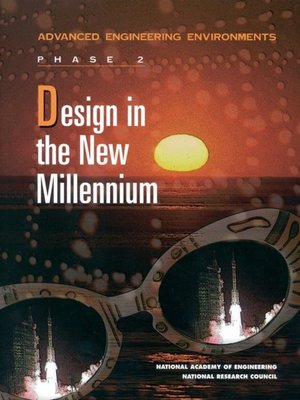Design in the New Millennium
ebook ∣ Advanced Engineering Environments: Phase 2
By National Academy of Engineering

Sign up to save your library
With an OverDrive account, you can save your favorite libraries for at-a-glance information about availability. Find out more about OverDrive accounts.
Find this title in Libby, the library reading app by OverDrive.



Search for a digital library with this title
Title found at these libraries:
| Loading... |
<p>America is changing. Many of the most noticeable changes in day-to-day life are associated with the advancing capabilities of computer systems, the growing variety of tasks they can accomplish, and the accelerating rate of change. Advanced engineering environments (AEEs) combine advanced, networked computer systems with advanced modeling and simulation technologies. When more fully developed, AEEs will enable teams of researchers, technologists, designers, manufacturers, suppliers, customers, and other users scattered across a continent or the globe to develop new products and carry out new missions with unprecedented effectiveness. Business as usual, however, will not achieve this vision. Government, industry, and academic organizations need to make the organizational and process changes that will enable their staffs to use current and future AEE technologies and systems.</p>
<p><em>Design in the New Millennium: Advanced Engineering Environments: Phase 2</em> is the second part of a two-part study of advanced engineering environments. The Phase 1 report, issued in 1999, identified steps the federal government, industry, and academia could take in the near term to enhance the development of AEE technologies and systems with broad application in the U.S. engineering enterprise. <em>Design in the New Millennium</em> focuses on the long-term potential of AEE technologies and systems over the next 15 years. This report calls on government, industry, and academia to make major changes to current organizational cultures and practices to achieve a long-term vision that goes far beyond what current capabilities allow.</p>






